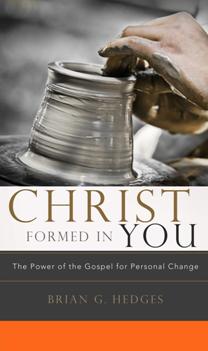....To summarize, Christ died for our sins and in our
place. In his substitutionary work on the cross, Jesus saved us from the
consequences of our sins.
· Through propitiation, he became our curse and
bore the wrath we deserved.
· In redeeming us, he paid the ransom that set us
free from slavery.
· He also rescued us from the darkness of this
present evil age.
· Through reconciliation, he removed the hostility
separating us from God.
· And he triumphed over our enemies: sin, Satan,
and death.
These glorious achievements of the cross show why it lies
at the heart of the gospel.
The Power of Christ’s Resurrection
Jesus, of course, did not remain on the cross or stay in
the grave. The Christian message would not be good news if there were nothing
to report beyond Good Friday. But there is
a report. “He was raised on the third day, in accordance with the Scriptures”
(1 Cor. 15:4). The news is good because Jesus is alive!
What did Paul mean when he claimed that Christ was
raised? Did he simply mean the spirit of Jesus had gone to heaven after he
died? That Jesus had passed into life-after-death? Did he mean that he and
others had seen visions of Jesus or had been visited by the spirit of Christ or
had a sense of his abiding presence with them? If asked, as one hymn does, “You
ask me how I know he lives?” would Paul have answered, “He lives within my
heart”? What does resurrection mean?
The Resurrection is Physical
First, Paul meant that the physical body of Jesus of Nazareth—the same body that was killed through crucifixion, wrapped in linens, and laid in Joseph of Arimathea’s tomb—was raised out of death into glorious, physical life. In 1 Corinthians 15:5-8, Paul named some of the many eyewitnesses of the risen Christ (including himself) as proof. When he wrote these words, many of those witnesses were still alive.
The Resurrection is Physical
First, Paul meant that the physical body of Jesus of Nazareth—the same body that was killed through crucifixion, wrapped in linens, and laid in Joseph of Arimathea’s tomb—was raised out of death into glorious, physical life. In 1 Corinthians 15:5-8, Paul named some of the many eyewitnesses of the risen Christ (including himself) as proof. When he wrote these words, many of those witnesses were still alive.
In one appearance, Jesus ate fish with his disciples,
proving the tangibility and physicality of his resurrection body (Luke
24:33-43). As Luke says, Jesus “presented himself alive after his suffering by
many proofs, appearing to [the apostles] during forty days and speaking about
the kingdom of God” (Acts 1:3).
The resurrection means that the body of Jesus emerged
from death in glorious triumph!
The Resurrection is Eschatological
The resurrection of Christ is not only physical; it is eschatological. This means it belongs to, and effectively inaugurates, the age to come. This is why Paul draws the connection between the resurrection of Christ in the past and the resurrection of believers in the future.
The Resurrection is Eschatological
The resurrection of Christ is not only physical; it is eschatological. This means it belongs to, and effectively inaugurates, the age to come. This is why Paul draws the connection between the resurrection of Christ in the past and the resurrection of believers in the future.
But in fact Christ has been raised from
the dead, the firstfruits of those who have fallen asleep. For as by a man came
death, by a man has come also the resurrection of the dead. For as in Adam all
die, so also in Christ shall all be made alive. But each in his own order:
Christ the firstfruits, then at his coming those who belong to Christ. Then
comes the end, when he delivers the kingdom to God the Father after destroying
every rule and every authority and power. For he must reign until he has put
all his enemies under his feet. The last enemy to be destroyed is death. (1
Cor. 15:20-26)
Notice that Paul calls the resurrection of Christ “the
firstfruits of those who have fallen asleep” (v. 20). This agricultural term
derives its significance from the Old Testament, where worshipers brought their
“firstfruits” sacrifices each year at the beginning of the spring harvest
(Exod. 23:19; Lev. 23:10-11). The firstfruits offering was not only the first
and best offering, it represented the entire harvest.[i]
His resurrection is not an isolated
event in the past. Rather, in its undeniably full-bodied, past historicity, it
belongs, in a manner of speaking, to the future. It can be said to be from the
future and to have entered the past and to be controlling the present from that
future. In Christ’s resurrection . . . the age-to-come has begun, the new
creation has actually dawned, eschatology has been inaugurated.[ii]
As C. S. Lewis observes,
The New Testament writers speak as
if Christ’s achievement in rising from the dead was the first event of its kind
in the whole history of the universe. He is the “first fruits,” the “pioneer of
life.” He has forced open a door that has been locked since the death of the
first man. He has met, fought, and beaten the King of Death. Everything is
different because He has done so. This is the beginning of the New Creation: a
new chapter in cosmic history has been opened.[iii]
